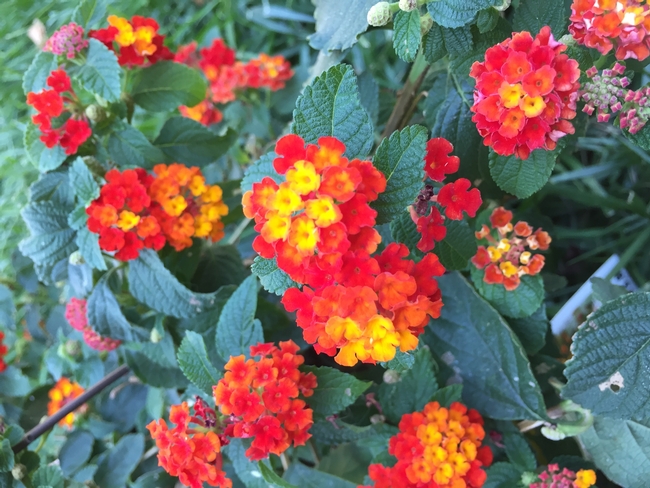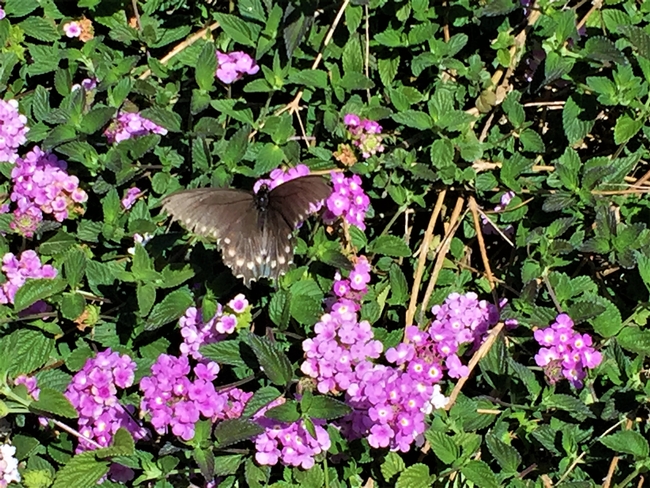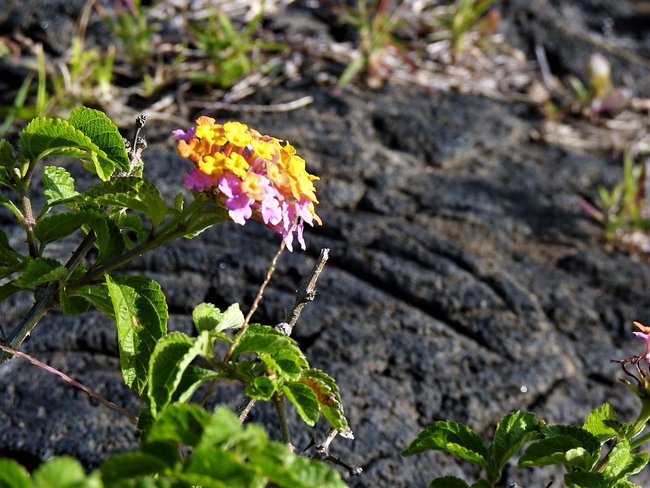Lantana Lovesong
It was not a head-over-heals, love-at-first-sight affair between lantana (Lantana sp.) and I. In fact, I was only vaguely aware of it for years. My interest began to grow several years ago, when I saw lantana growing tenaciously out of the cooled lava rock formed after an eruption of Kilauea Volcano on the big island of Hawaii. I become more intrigued when I saw it growing in both India and South Africa. What a prolific and adaptive plant it was, to be in bloom in tropical Hawaii, yet also during the cold, dry winters of northern India and Johannesburg.
My love for lantana came into full bloom this year, however. As most of my plants began to show the effects of this summer's unending heatwave, the lantana in the area seemed impervious to the heat, and, actually appeared to be thriving. I am particularly taken with ‘Dallas Red', which blooms in a shocking burst of various hues of deep burgundies, oranges and yellows. I've snatched up as many pots of lantana from the big box stores as my yard (and credit card) can absorb while the plants are in flower, and I can verify their color.
My garden is a revolving patchwork of plants, leaning increasingly heavily toward drought tolerance and pollinator attractors. Lantana meets both criteria. The blossoms attract birds and butterflies. The plant requires little to no water, once established, and overwatering will actually decrease the abundance of blooms.
Not everyone is as enamored with lantana as I am. India, Australia, and South Africa have been attempting eradication efforts of this “invasive weed” for the last two hundred years. The countries have used fire, mechanical, chemical, biological and combination methods to control the spread of lantana, to no avail (http://www.conservationindia.org/articles/lantana-in-india-a-losing-battle).
Sunset states that Lantana camera and Lantana montevidensis are the two species used in hybridizing. While all of my plants are identified as Lantana camera, L. camera grows to 6' tall and L. montevidensis grows to 2' tall. The information accompanying my plants describe some of them as growing 3' to 5', and others growing 1 ½' to 2', so I assume my lantanas comprise a cross section of both species.
I'll be pulling out a thirsty, unhappy gardenia (Gardenia jasminoides), an annoyingly prolific jasmine (Jasminium sp.), and some just-try-to get-rid-of-me fortnight lilies (Dietes iridiodes) in order to make room for the lantana. I'm excited to plant them, now that the weather is cooler, and our (fingers crossed) winter rains will help develop their root systems. If all goes well, I'll be whispering sweet nothings over my beautiful lantana plants next summer.

photos by Melinda Nestlerode

Butterfly visiting lantana.

Lantana growing on lava.


I was completely surprised to see one of my favorite garden dwellers pictured in orange and yellow. I am a novice and did not know the name of this flower. Thank you for a delightful informative article!
Posted by Laurie Schrader on September 27, 2017 at 3:27 PM